
Written by:
Rokas Stankevicius
Founder @ aiclicks.io
Reviewed by:
Matas Kibildis
Head of Growth @ aiclicks.io
Last updated:
Oct 19, 2025
Expert Verified
Ranking in AI search results is now the fastest-growing path to online visibility. These days, showing up in a chatbot response can be more valuable than a traditional #1 spot on Google.
As the founder of AIclicks.io, I’ve spent the past few years working with marketers and brands who want their answers and offers to be the first thing people see – whether users are searching with Google’s AI Overviews, asking ChatGPT for recommendations, or using Bing Copilot on their phone.
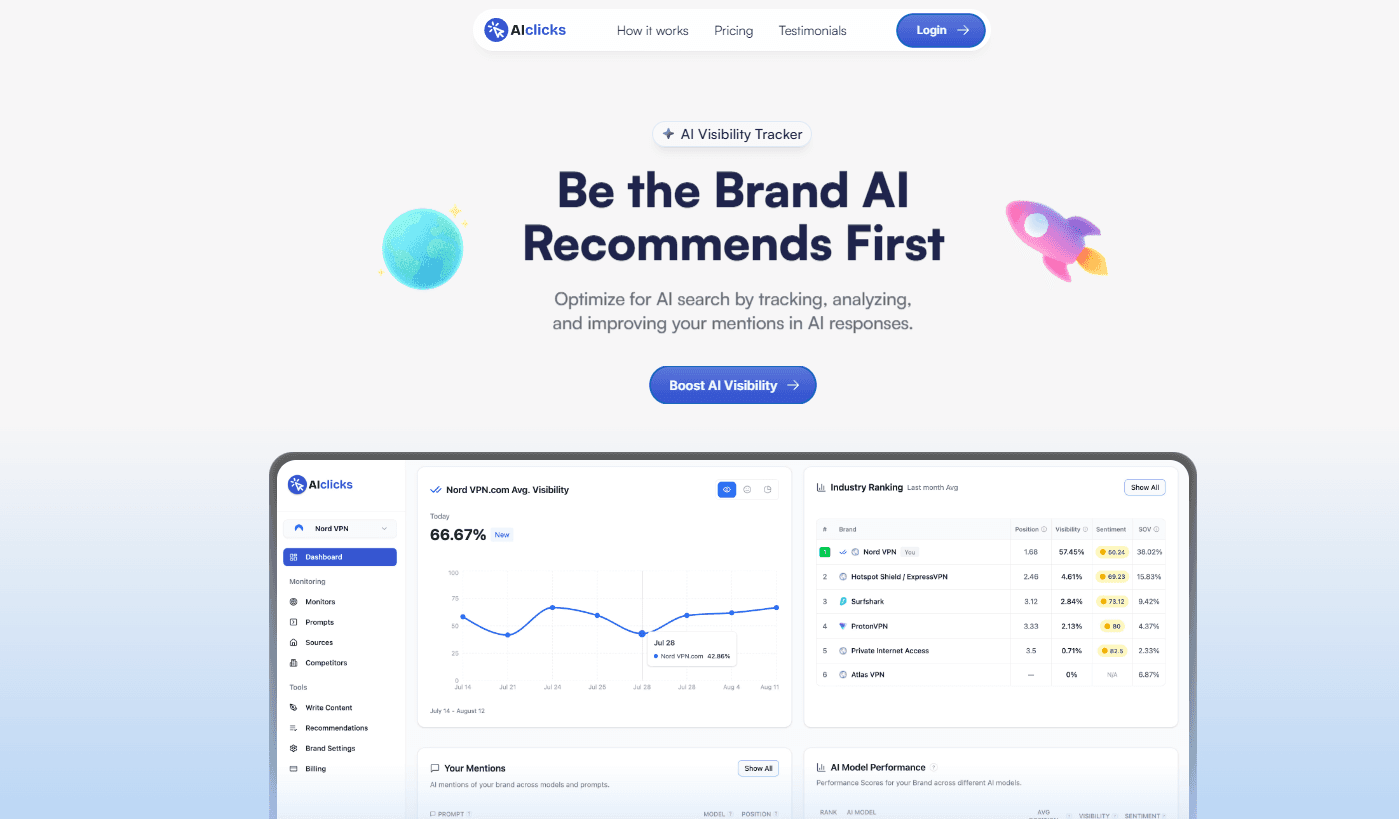
What’s changed? The basics of SEO still matter, but AI-powered search engines use smarter algorithms. They interpret questions, analyze context, and summarize vast amounts of data – picking up content that’s genuinely helpful, clearly organized, and seen as trustworthy.
In this guide, I’ll walk you through step-by-step actions that my team and I use to help brands win visibility and conversions in AI search ecosystems.
Let’s get practical.
Ranking in AI Search Results TL;DR
Ranking in AI search results now rivals (and often beats) traditional SEO, as engines like ChatGPT, Google AI Overviews, and Bing Copilot pull structured, trustworthy content directly into conversational answers.
Measurement comes first – track AI-referrer traffic in GA4, monitor prompt-level mentions and citations with tools like AIclicks, and report visibility by topic clusters instead of single keywords.
Core ranking factors focus on clarity and credibility: strong E-E-A-T, clean structure, schema markup, fast performance, and natural, conversational phrasing built around real user questions.
Success depends on creating “liftable” content – answer-first sections, short paragraphs, lists, tables, and multimedia that AI can easily extract and cite – supported by external authority through directories, reviews, and community engagement.
Winning long term means running Google and Bing “rails” in parallel, iterating weekly on content and citations, and building genuine authority rather than shortcuts, so your brand consistently shows up first in AI-driven search.
Why AI Search Results Are the New SEO Frontier
Here’s the reality: AI search results aren’t just another tech trend. They’re reshaping how users discover brands and solutions. Unlike traditional rankings, AI-driven platforms – think Google’s AI Overviews, ChatGPT, and Bing Copilot – don’t just list links. They summarize answers, cite sources, and pull recommendations directly into conversational outputs.
This matters for marketers and business owners because…

AI surfaces often put brands front-and-center or leave them invisible, no middle ground.
Queries are conversational. Instead of searching “best CRM 2025,” people ask, “What’s the best CRM for small businesses right now?”
Winning a spot in these answers drives traffic, sign-ups, and revenue – sometimes straight from the recommendation.
I see firsthand how clients who optimize for AI search drive consistent growth in leads and conversions. Visibility here isn’t just nice to have, it’s essential.
Instrumenting AI Search Engine Visibility
You can’t improve what you don’t measure. Early on, I tried tracking our AI traffic by just looking at analytics – but that didn’t show the full picture. Instead, we built direct measurement into our process.
Here’s our approach:
AI-referrer tracking in Google Analytics 4 (GA4): Maintain a living list of AI referrers (Copilot, Perplexity, ChatGPT, etc.) and check landing pages for conversion data.
Dedicated AI visibility dashboards: We use AIclicks to monitor prompt-level brand mentions, unique citations, and visibility rates. This isn’t about vanity metrics, it’s about mapping real questions to revenue – finding out which clusters of prompts like “best VPN for streaming” actually drive new customers.
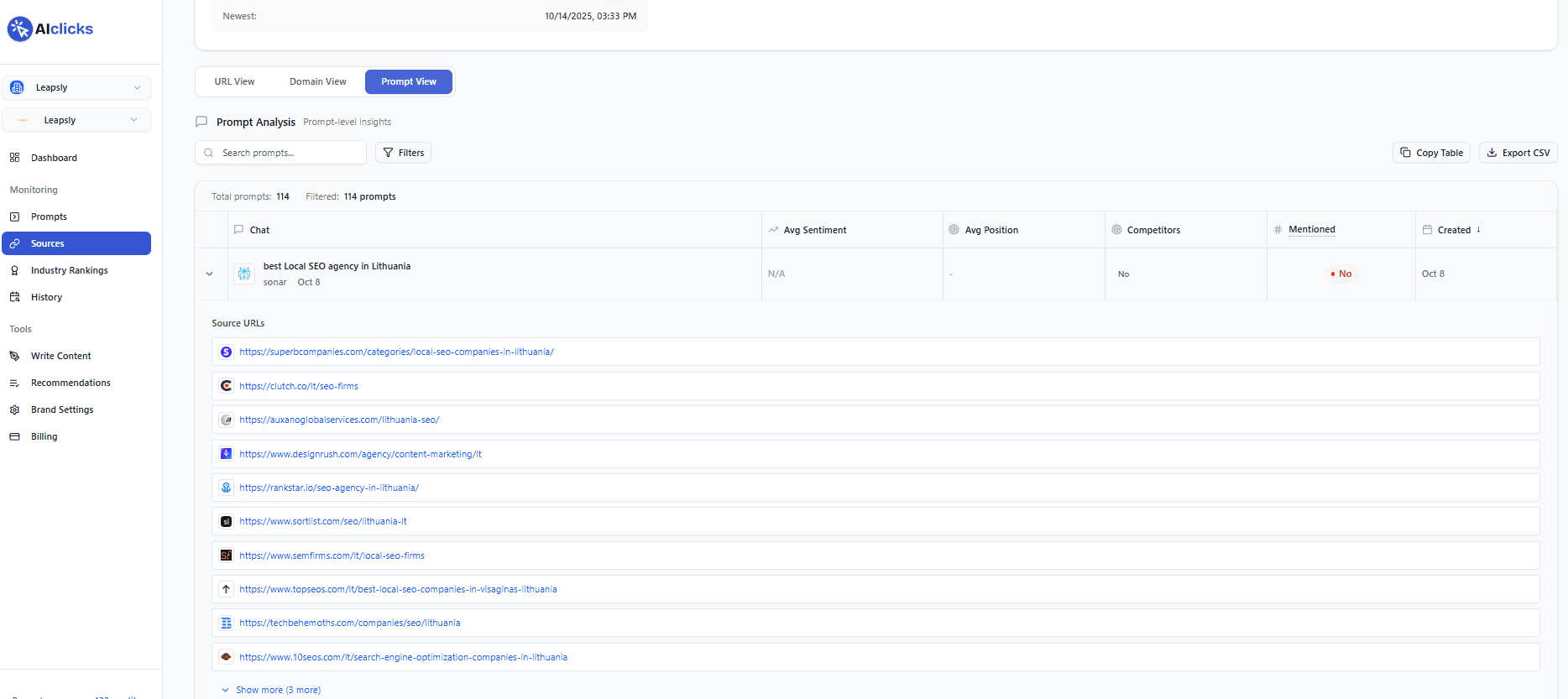
Cluster-first reporting: Build topic clusters from commercial keywords, then track visibility, conversions, and the external sources AI engines cite when recommending you.
When you have this data, you can prove ROI and fix exactly what’s missing.
The Core Ranking Factors in AI Search
Most people ask, “How do I get recommended by ChatGPT or Google AI?” The answer isn’t magic – it’s about following what AI search engines look for.
Experience, Expertise, Authority, Trust (E-E-A-T): AI models prioritize sources that are clearly written by knowledgeable people or brands. Think author bios, thorough answers, and referenced facts.
Clear Content Structure: AI search likes definitional answers, logical headings (H2s/H3s), tables with comparisons, and bullet lists. Your content needs to be easy for machines to scan and summarize.
Schema Markup: Add structured data like FAQ, How-To, and Organization schemas. Keep it clear and purposeful. Don’t overload for quantity’s sake (video guide).
Authority Signals: Get cited by trusted external domains – industry sites, directories, review platforms. AI treats mentions as “votes of confidence.”
Technical Accessibility: Fast, secure, mobile-friendly sites rank better. Don’t let poor user experience block everything else you’ve built.
Multimedia Integration: Use relevant images, videos, and clear formatting. Multimedia often improves AI’s understanding and authority scoring (source).
Semantic Optimization: Write for real questions – conversational phrases like “Which platform is best for freelancers?” and grouping them into semantic clusters.
In short: combine technical SEO with detailed, helpful, and structured answers.
Prompt-Driven Strategies for Maximum AI Visibility
Most brands create content for broad keywords. That’s a start – but AI responds better to clusters of prompts that mirror how people actually ask questions. For guidance on identifying and monitoring these prompts, check out our post on AI Search Engines: What Prompts to Track on ChatGPT and Perplexity.

For example, instead of just “VPN for streaming,” our process asks:
What questions do real users ask about VPNs for streaming?
Can we model these prompts into clusters (“Stream privately with VPNs,” “Best VPNs for Netflix”)?
How do these clusters connect to our transactional “money” pages and supporting guides?
We use AIclicks to build and monitor prompt libraries, track each cluster’s performance, and adjust content assets where visibility (and revenue) are lowest.
This method leverages:
Grouping prompts by commercial intent
Aligning each cluster with both transactional and supporting content
Targeting authoritative external sites most often cited by AI models for those clusters
For us, this strategy replaced scattershot blog posting with revenue-driven AI search optimization and content planning.
Technical SEO for AI Ensures Access and Crawlability
You could have the world’s best content and still be invisible if AI bots can’t access it. One time, a client accidentally blocked GPTBot and PerplexityBot in their robots.txt. Their brand stopped showing up in ChatGPT answers overnight.
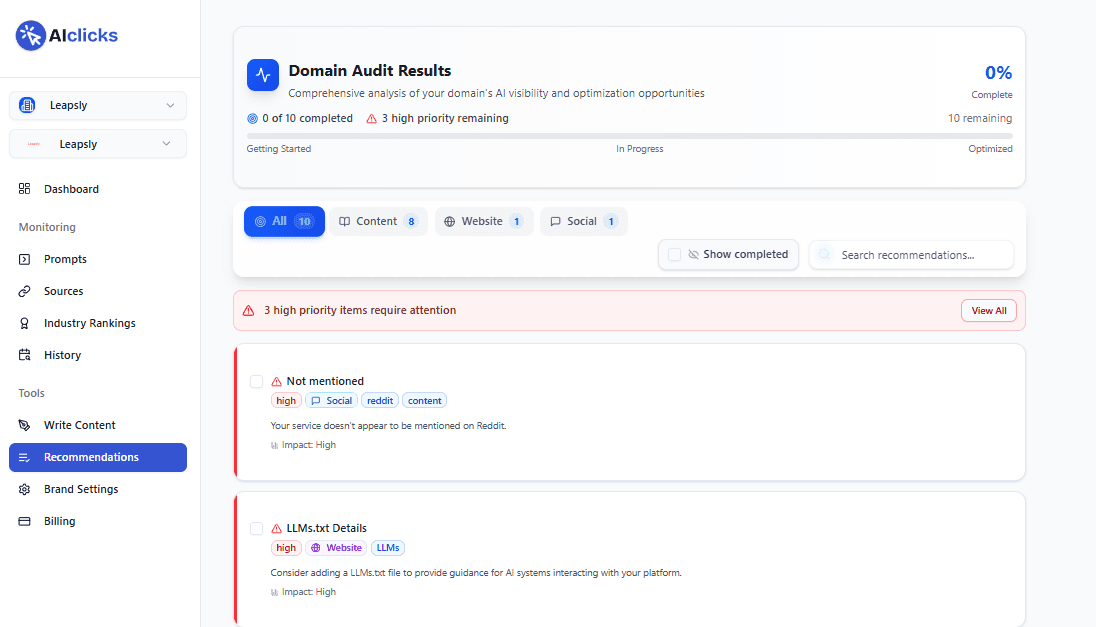
Here’s what works:
Always allow access for major AI/search bots (GPTBot, OAI-SearchBot, PerplexityBot, Copilot).
Use server-side rendering (SSR) or generate static HTML for critical content. Avoid JavaScript-only rendering for important answers.
Segment XML sitemaps by page type (landing, guides, collections) and keep them fresh. The aim: every key URL is three clicks or less from your homepage.
A technically sound site is the front door to AI visibility.
Creating Content AI Models Want to “Lift”
Winning the AI spotlight means your content is “liftable” – easy for AI to extract, summarize, and cite. We write every section to answer the question up front – in two or three lines – then support it with details.
Answer-first intros: Begin each section with the direct answer.
One idea per section: Use clear headings, short paragraphs, and bulleted lists.
Lists and tables: Especially for “best X” topics – higher placement in lists leads to more AI citations.
Structured data: Use only when it’s genuinely helpful for clarity (not just for decoration).
Multimedia elements: Images and videos help with topical authority, not just user experience.
I’ve seen our visibility spike after rewriting guides to match this format. It works.
Winning External Citations and Authority
Mentions matter – sometimes more than backlinks. AI answers often cite reviews, “best” roundups, and forum threads that look authentic.
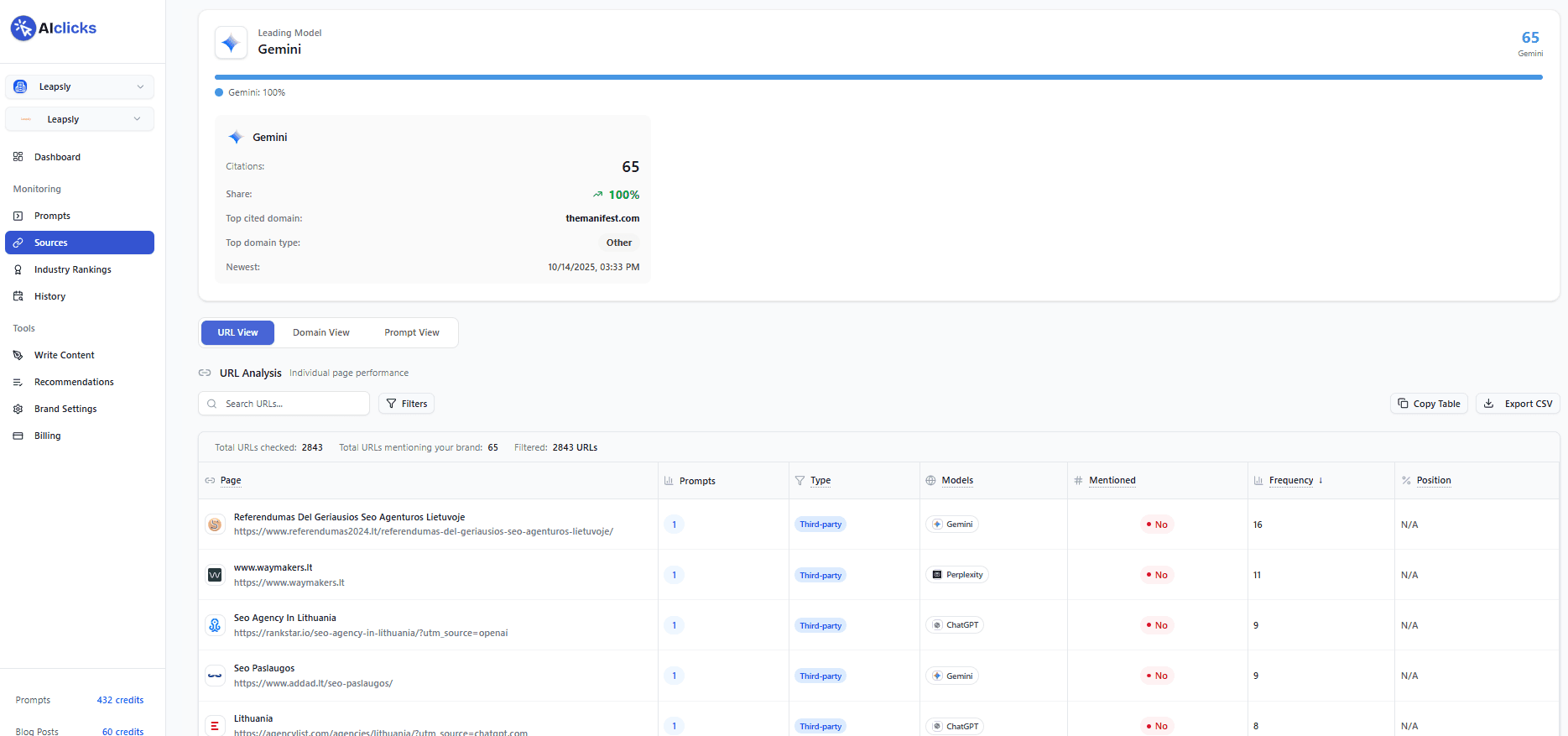
We focus on:
Directory placement: Keeping profiles updated on B2B sites like G2, Capterra, Gartner, or B2C platforms like Trustpilot.
Affiliate listicles: Request placements with unique product data or performance proof.
Forums and Reddit: Participate in threads that already rank well for topical clusters. Build genuine reputation – don’t just drop links.
Corroboration grid: Prioritize external targets by domain type, proximity to your niche, observed AI-citation frequency, and effort required. Build a Top-20 “must win” list for each cluster.
This consistent outreach pays off with stronger authority – and persistent AI citations.
Joining Google and Bing Rails for Fast, Wide Discovery
AI search engines crawl and index content via both Google and Bing channels. We run both in parallel for maximum coverage.
Google Rail:
Submit and maintain segmented sitemaps in Search Console.
Use URL Inspection for priority content launches or rewrites.
Monitor coverage reports for issues like “Crawled – not indexed.”
Bing/IndexNow Rail:
Enable IndexNow via a plugin or API.
Push URLs on create, update, or delete events. This helps Bing, Naver, Seznam, and Copilot spot your changes fast.
Match up with structured data for product, price, or availability updates.
Bottom line: Keeping both “rails” running gets your content discovered and cited faster in AI-driven answers.
Monitoring, Iterating, and Sustaining AI SEO Success
Think of AI SEO like gardening – it needs regular care. Every week, we scan AIclicks dashboards, push micro-fixes, update external placements, and post in forum threads.
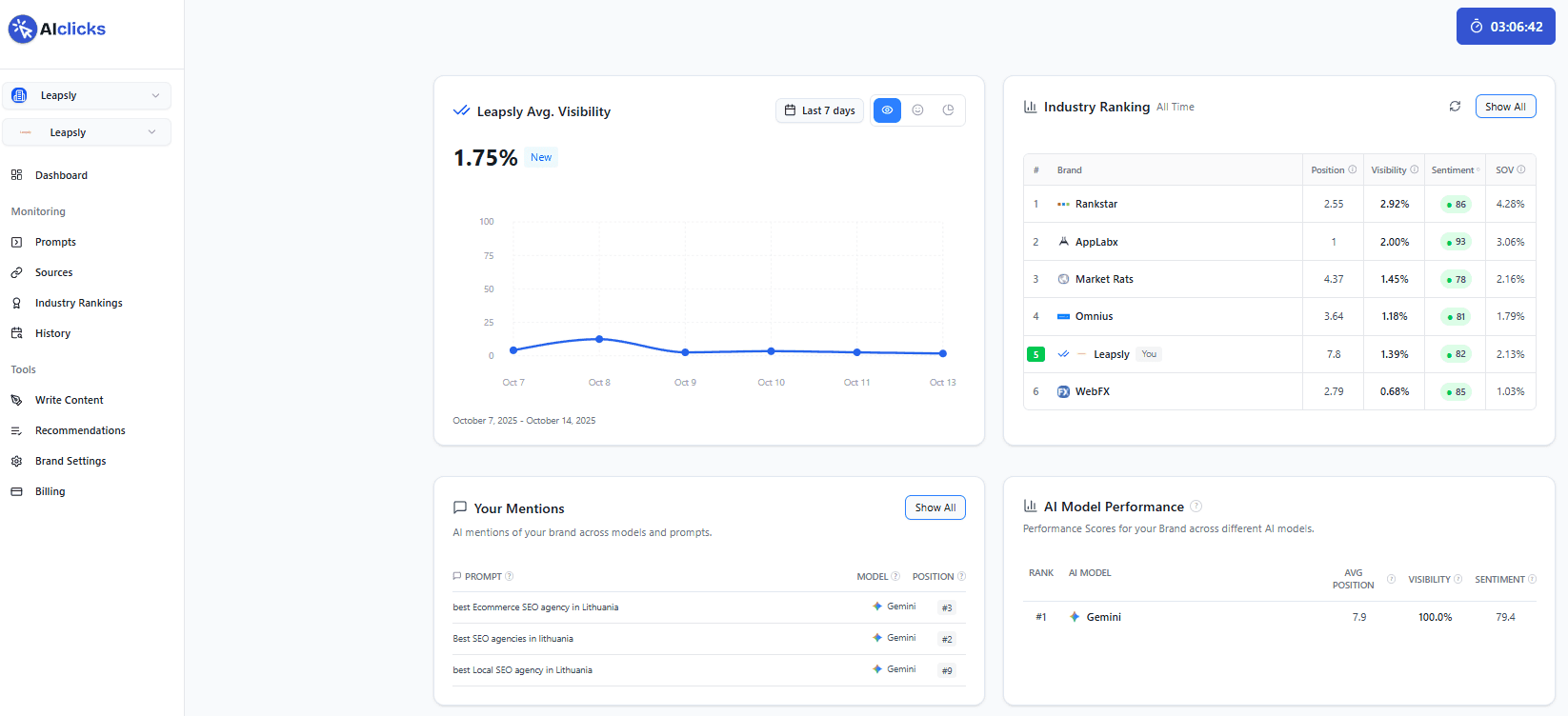
Weekly: Review prompt/brand positions, cited sources, and ship 1–2 fixes.
Monthly: Publish new pillar content per cluster, audit technical coverage, and update Top-20 target domains.
Quarterly: Re-baseline AI traffic share, conversion rates, and templatize what worked best for future rollouts.
This ongoing cadence keeps your visibility growing, even as AI ranking factors shift.
Governance and Avoiding Pitfalls in AI SEO
We’ve seen brands hurt themselves by trying too hard – keyword stuffing, fake forum posts, or loading up schema without real content. Here’s what to avoid:
Don’t stuff keywords. AI models prefer natural, semantic language.
Don’t publish thin or incomplete answers.
Avoid poor structure. Keep content clean and organized.
Don’t overload with schema markup. Use it where it helps, not everywhere.
Also, build real authority – don’t fake it. Be transparent, provide actual expertise, and let others cite you naturally.
AI SEO Tools & Why AIclicks Leads the Pack
There are several platforms out there tracking AI visibility, prompts, and citations. We built AIclicks because we needed one tool to:
Track AI search brand mentions and visibility across engines
Run GEO audits for prompt clusters and regions
Manage prompt libraries and topical strengths
Benchmark competitors without guesswork
Uncover citation sources by model – Google, ChatGPT, Perplexity, Gemini, etc.
Generate AI-optimized content with real references
Our users can prove ROI, close visibility gaps quickly, and adapt updates based on where AI models “lift” their content. Other tools on the market (like Profound, Otterly.ai, promptwatch, athenahq, mentions.so) help with specific needs, but our approach is all-in-one: analyze, act, and win in AI driven search.

Need more tools to explore? Check out 16 Best AI SEO Tools in 2025 (Tried and tested).
Conclusion & Your AI SEO Checklist
The essentials for ranking in AI search engine results:
Instrument measurement: Use tools like AIclicks and GA4 AI segments for visibility tracking.
Focus on clusters and prompts: Map clusters to revenue, track performance across engines.
Build answer-first, well-structured content: Use schema, clear headings, and direct answers.
Open technical access: Make important pages easily crawlable, update sitemaps, allow AI bots.
Win citations and mentions: Build presence on directories, listicles, and forums.
Monitor and iterate: Review dashboards, ship fixes, and adapt content monthly.
Avoid shortcuts: Prioritize clarity, depth, transparency, and true authority.
If you want your brand to show up first in conversational answers, start by following these steps. In my experience, with the right mix of measurement, authority, and structure, you can own real estate in AI-driven search very fast.
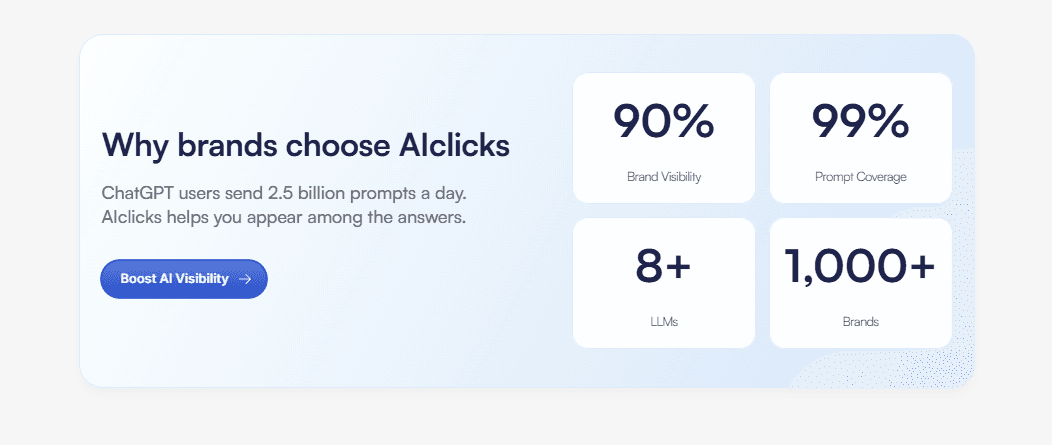
FAQ for Ranking in AI Search Engine Results
How to optimize AI search results?
To optimize for AI search, create comprehensive, high-quality content that uses structured data, conversational language, and clear headings to answer user questions directly. Build E-E-A-T by earning backlinks from authoritative sites and securing brand mentions. Also, focus on technical SEO best practices like allowing AI bots to crawl your site and ensuring fast loading speeds.
Content Strategies:
Focus on topics, not just keywords.
Write in a conversational, precise manner.
Use clear headings, lists, and Q&A blocks.
Optimize answers for featured snippets.
Build topical authority.
Technical Optimization:
Implement Schema.org markup (JSON-LD).
Place important info near the top for easier access.
Allow AI bots to crawl.
Optimize site speed.
Authority and Trust:
Establish E-E-A-T signals.
Build brand mentions.
Seek out citations.
Monitor and Adapt:
Continuously monitor and improve your strategies.
How to rank in Google's AI mode?
Focus on clear, trustworthy content with direct answers and plenty of structure. Demonstrate E-E-A-T, cover topics in depth, leverage digital PR for mentions, and use meaningful structured data.
Content Strategy:
Provide direct answers at the top.
Show firsthand experience and authority.
Cover topics in depth.
Use semantic keywords.
Update content regularly.
Leverage images and videos for multimodal visibility.
Technical Optimization:
Use headings, short paragraphs, and bullets.
Prioritize fast loading and mobile responsiveness.
Implement structured data.
Brand & Visibility:
Build brand mentions.
Encourage user-generated content.
Ensure semantic consistency.
How to do SEO for ChatGPT?
Produce in-depth, accurate content that answers real user queries, using natural language and clear structure. Build authority through citations, user experience, and genuine expertise. Use schema markup where helpful and promote your content for wider recognition.
How to optimize your content to rank in AI search results?
Focus on user intent, provide comprehensive and clearly structured answers, use semantic markup, and maintain strong E-E-A-T. Make content accessible and citation-ready for AI platforms.
What is SEO (search engine optimization) for AI search called?
AI SEO is also called Answer Engine Optimization (AEO), Generative Engine Optimization (GEO), or Artificial Intelligence Optimization (AIO). It means preparing content so it is cited and featured by AI-powered tools.
Further Reading & Essential Resources
Search Engine Land: Measuring and Maximizing Visibility in AI Search
Visit the AIclicks Knowledge Base for techniques, templates, and new strategies as AI search evolves.
Ready to take action? The tools and steps above work for any business aiming for top spot in the conversational search era. If you have questions or want to know how our clients are growing with AIclicks, reach out – I’m always happy to share what’s working best.
Our Content:
Tools
Best Claude SEO Tracking Tools for 2025
Nov 28, 2025
Tools
Best LLM SEO Analysis Tools in 2025
Nov 28, 2025
Tools
Best AI Overview Rank Trackers 2025
Nov 28, 2025
Tools
Best Grok Tracking Tools of 2025
Nov 28, 2025
Tools
Best Copilot Rank Tracking Tools 2025
Nov 28, 2025
Tools
10 Best AEO Tracking Tools in 2025
Nov 28, 2025
Any questions left?
Book a call here:











